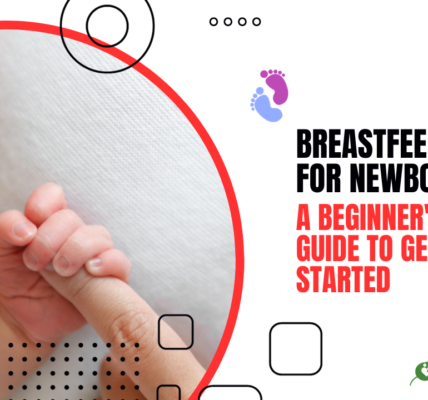Naptime Essentials: A Comprehensive Guide to Infant Sleep Schedules
The journey into parenthood is a joyous adventure, but it often comes with the challenge of navigating an infant’s nap schedule. Achieving a harmonious naptime routine requires a blend of knowledge, creativity, and a touch of burstiness. In this guide, we’ll explore the essential elements of infant sleep schedule, providing you with a roadmap to serene baby sleep.
Understanding Infant Sleep Patterns
Creating a conducive naptime environment begins with understanding your baby’s sleep patterns. Infants sleep for varying durations throughout the day, and decoding these patterns is the first step in establishing a predictable routine.
-
Newborn Sleep Patterns:
- Newborns sleep for 14-17 hours a day, with each sleep cycle lasting 2-3 hours.
- Their sleep is divided into short naps, often dictated by hunger and discomfort.
-
3-6 Months:
- As your baby grows, they may start to consolidate sleep, aiming for longer periods at night.
- Daytime naps become more organized, with 3-4 naps totaling 3-4 hours.
-
6-12 Months:
- By this stage, most infants transition to 2-3 naps a day, totaling 2-3 hours.
- A consistent sleep schedule aids in promoting better nighttime sleep.
Essential Naptime Elements
Creating an optimal naptime environment involves incorporating essential elements that cater to your baby’s comfort and well-being.
-
Comfortable Sleep Space:
- Ensure the crib or bassinet is free from toys and loose bedding.
- Maintain a comfortable room temperature to promote quality sleep.
-
Establishing a Routine:
- Develop a consistent pre-nap routine to signal the approaching naptime.
- Incorporate calming activities such as gentle rocking or a lullaby.
-
Day-Night Differentiation:
- Expose your baby to natural light during the day to regulate their circadian rhythm.
- Keep nighttime feeds calm and quiet to reinforce the difference between day and night.
-
Appropriate Awake Windows:
- Understand your baby’s age-appropriate awake windows to prevent overtiredness.
- Avoid keeping a baby awake for extended periods, as it may lead to difficulty falling asleep.
Creative Burst: Dreamy Sleepscapes
Imagine a world where sleep becomes a magical journey for your little one. Picture a dreamy moonscape with soft lullabies, where each nap is a voyage into the realm of sweet dreams. Infuse creativity into your baby’s sleep environment by incorporating imaginative elements:
- Starlight Projector: Cast a gentle constellation of stars across the nursery ceiling to create a soothing atmosphere.
- Soft Sleepy Tunes: Introduce a playlist of calming melodies that transport your baby into a world of tranquility.
- Customized Sleep Story: Craft your own bedtime story featuring characters from your baby’s day, weaving a narrative that lulls them into peaceful sleep.
Remember, creativity knows no bounds, and the more enchanting the sleep environment, the more eagerly your little one will embrace the joy of napping.
Capturing Naptime Memories: A Snapshot in Time
As your baby grows, naptime evolves, and each nap becomes a precious snapshot in time. Capture these moments in a unique way:
- Naptime Journal: Maintain a naptime journal, documenting the duration, mood, and any notable events surrounding each nap.
- Naptime Photography: Create a photo diary capturing the serene expressions and adorable sleep positions of your little one during naps.
- Artistic Naptime Prints: Transform naptime memories into artistic prints, creating a visual journey of your baby’s naptime adventures.
Infusing creativity into the documentation of naptime not only preserves these moments but also adds a touch of artistic flair to your parenting journey.
Building a Naptime Routine Beyond Infancy
As your baby transitions into toddlerhood, the naptime routine undergoes transformations. Adapt your approach to align with the changing needs of your growing child:
- Transition to Quiet Time: Introduce quiet time activities for older toddlers who may outgrow traditional naps. Engage them in calming activities like reading or drawing.
- Consistent Sleep Environment: Maintain a consistent sleep environment, ensuring the room remains conducive to restful sleep with dim lighting and a comfortable temperature.
- Establishing Sleep Independence: Encourage sleep independence by gradually allowing your toddler to self-soothe and fall asleep without constant parental intervention.
Creativity continues to play a crucial role in adapting the naptime routine to suit the evolving needs of your child, fostering a positive association with sleep.
FAQs: Frequently Asked Questions of Infant Sleep Schedule
FAQ 1: When should I start establishing a naptime routine?
Answer: It’s never too early to start! Begin introducing a consistent naptime routine when your baby is around 2-3 months old.
FAQ 2: How can I create a calming pre-nap routine?
Answer: Include activities such as a warm bath, gentle massage, or reading a soothing story to create a calming pre-nap atmosphere.
FAQ 3: What if my baby doesn’t follow a strict infant sleep schedule?
Answer: Flexibility is key. While a consistent schedule is beneficial, allow room for adjustments based on your baby’s needs and developmental milestones.
FAQ 4: Should I wake my infant from naps to maintain a schedule?
Answer: Ideally, let your infant complete a nap naturally. However, if naps extend too close to bedtime, consider gently waking them to protect the nighttime sleep routine.
FAQ 5: How can I manage infant sleep schedule on the go?
Answer: Invest in portable sleep solutions like travel cribs or strollers with reclining features to ensure your baby can nap comfortably while you’re out.
FAQ 6: What signs indicate that my baby is ready to transition to fewer naps?
Answer: Watch for longer periods of wakefulness between naps and increased nighttime sleep. These signs suggest your baby may be ready to transition to a more consolidated nap schedule.
FAQ 7: Is it normal for my baby to catnap during the day?
Answer: Yes, catnapping is common, especially during the first few months. Embrace these short naps, and focus on creating a soothing sleep environment.
FAQ 8: How can I help my baby fall asleep independently for naps?
Answer: Gradually introduce independent sleep habits, such as placing your baby in the crib while drowsy but still awake. This helps them learn to self-soothe.
FAQ 9: What role does nighttime sleep play in establishing a nap routine?
Answer: Nighttime sleep and daytime naps are interconnected. A solid nighttime routine contributes to better daytime naps, creating a well-rested and content baby.
FAQ 10: Are sleep regressions common during certain developmental stages?
Answer: Yes, sleep regressions can occur around developmental milestones. Be patient and maintain a consistent naptime routine to help navigate these temporary disruptions.
In Conclusion: A Well-Rested Beginning
Crafting a seamless naptime routine for your infant or creating infant sleep schedule is a journey filled with discovery. By understanding their sleep patterns, incorporating essential elements, and embracing the occasional unpredictability, you pave the way for serene sleep for both baby and parent. Remember, each nap is a small step toward a well-rested beginning on the exciting life of an infant.
Remember, you are not alone in this journey. Many resources and healthcare professionals are available to support you parenting endeavors. For more information on parenting and child development, visit Parentology.





